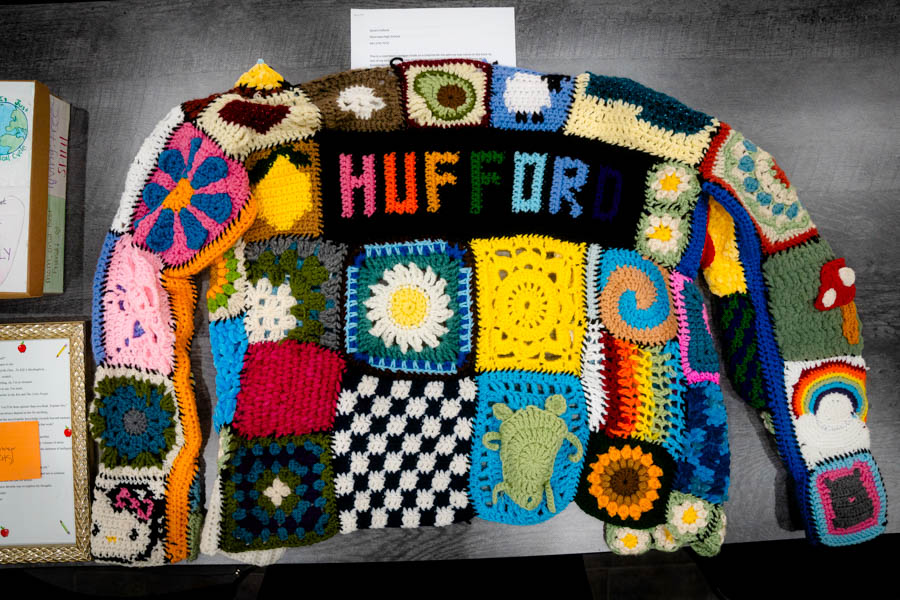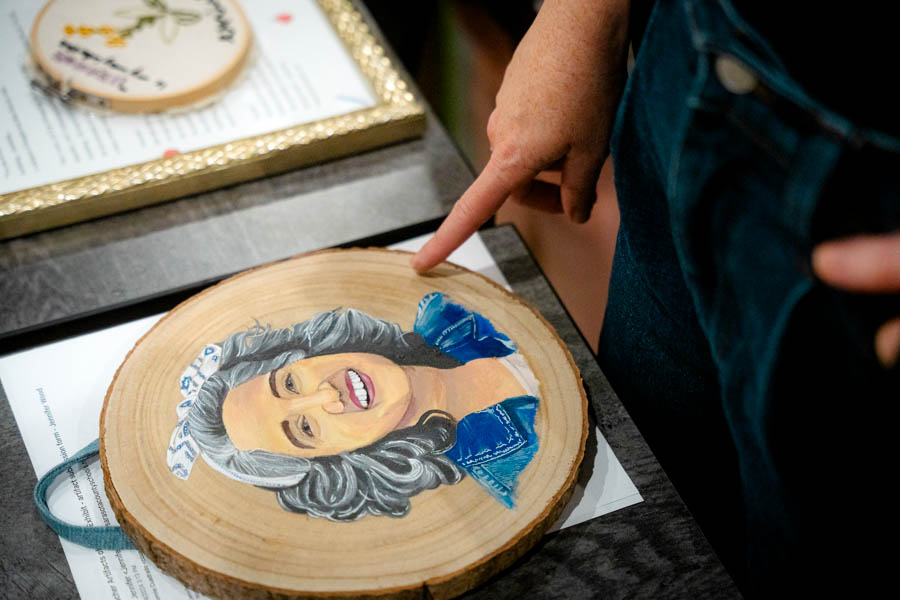It happens at the end of every school year. As summer starts to seep into the classroom and the days tick down until the final bell, students stare out the windows at their imminent summer break and as teachers collect final projects and grade the last exams—something special occurs. Because when that final bell rings, most students will walk out of the classroom with simply a nod or a wave, but a select few, who have felt truly touched by the presence of their educator, will leave something behind for their teacher—a note, a gift, a memento. An artifact of sorts from their time together. Something that conveys the significance of the teacher’s impact on their lives. Something that the teacher, unbeknownst to the student, will cherish forever. Es Swihart considers herself blessed to be the beneficiary of many such artifacts from her students. An English teacher in Sarasota County schools for 19 years—she was named the Sarasota County Schools Teacher of the Year in 2018—Swihart is innately familiar with the significance these gifts hold. “I was cleaning around my house one day and came across one of my boxes of letters and the pictures or whatever it is that students have given me over the years and realized that’s my legacy.
When I pass on at some point that’s what I want my daughter to see. That’s really what I’ve done with my life, those connections, that’s where my impact has been,” says Swihart. Swihart was in the midst of finishing up her Doctorate in Education at Johns Hopkins University, with a specialty in Mind, Brain and Teaching, thinking about what her dissertation project might look like when it hit her. “I started thinking that every teacher I know has one of these boxes, they have a file folder or a box and they keep those letters for a rainy day. One, because teaching is a challenging, exhausting job at times and two, I also think that teachers tend to be pretty humble. They don’t go around sharing that box with people, but that box is there. That was the beginning of ‘What could happen if people could read the things that students say?’

These were the beginnings of The Teacher Artifacts of Worth exhibit, a collaboration between the Education Foundation of Sarasota and the Sarasota Art Museum (SAM). The community exhibit, set to debut at SAM this August, will shine a light on the impact local teachers have had on their students. The exhibit called for a submission of artifacts that teachers, either current or former, of the Sarasota County School District have received from their students. Everything from letters to doodles to posters to videos will be displayed together at SAM this August. Artifact is probably the best term for the pieces found in the exhibition, because from an anthropological perspective, they paint a picture of Sarasota County. When studying civilizations of the past, anthropologists have long looked at the roles of elders in their respective communities—how information, teachings and values are disseminated to the younger generation tells the story of a people. Hundreds of years from now, when anthropologists look back at the history of Sarasota County, they will examine how the elders passed on knowledge and how the teachers educated their students. The Teacher Artifacts of Worth exhibit, filled with remnants of a community of the past, will help tell that story.
Between her years spent in the classroom and research for her doctorate, Swihart knows that the transfer of knowledge from educator to pupil is sacred. The artifacts found in the exhibit are more than just signs of positive teacher-student relationships, they are in some ways, the crowning evidence in her research of the correlation between neuroscience and education. “What we’re learning with neuroscience and education as a cross-curricular field of study is not just how the brain learns best, but how much cognition and emotion are interrelated and interdependent. You cannot separate them,” says Swihart. “So if you have a student that comes into a classroom where they feel connected and safe, they’re more able to take risks, they’re more able to be open, their prefrontal cortex is more likely to be fully engaged. However, when they enter a room with a teacher they feel doesn’t like them, just knowing that, research shows that the student is less likely to learn in that environment because on some level their brain is taking time to feel safe. We know that the student-teacher relationship is so important and that students’ self-worth is highly connected to growth mindset and motivation.”

It’s the knowledge of just how crucial the student-teacher relationship is to education that makes these mementos so special to the teachers that receive them. It’s proof that in the difficult grind of the school year they’re also making the impact that they hoped for. “One of the best notes I ever got was from a student that said ‘The best thing you ever taught me was how to be myself,’ says Swihart. “You think to yourself, ‘What else is greater than that?’ We can learn all the skills in the world but if we don’t feel confident in ourselves they’re only worth so much to us.”
While Swihart isn’t sure which or how many of her personal artifacts will be featured in the exhibition, she does know that she wants it to be a place of celebration for educators across the entire community. In addition to including all of the various artifacts submitted by Sarasota County School District teachers, the exhibition will have a section based on American artist Mary Beth Edelson’s story-gathering boxes, where the community will be invited to write their own stories about a teacher who left an indelible mark on their lives. “I would love it to just uplift the profession as a whole. I think everybody knows to a degree what education is like, but it’s very different when you’re on the other side of it in the classroom. The kind of job it is and the energy that it takes is massive and unlike anything else,” says Swihart. “I really want to highlight after all that work what that impact looks like.”









